Xin-She Yang N. 3 Function
Mathematical Definition
\[f(\mathbf x)=f(x_1, ..., x_n) =exp(-\sum_{i=1}^{n}(x_i / \beta)^{2m}) - 2exp(-\sum_{i=1}^{n}x_i^2) \prod_{i=1}^{n}cos^ 2(x_i)\]where $m$ and $\beta$ are parameters of the function. The values for these parameters are usually set to $m=5$ and $\beta=15$.
Plots
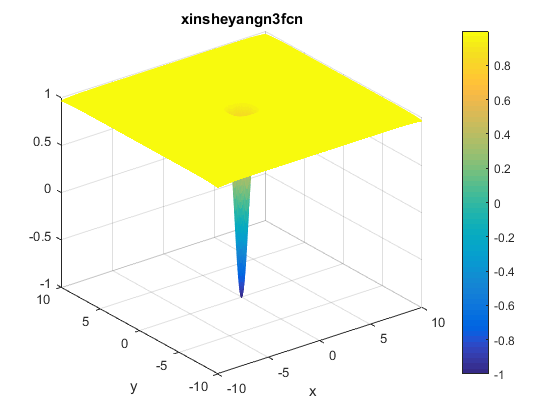
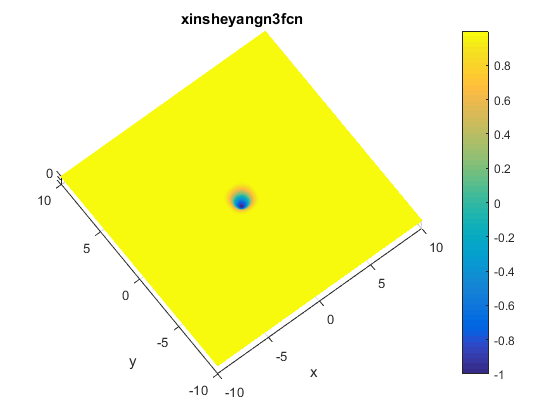
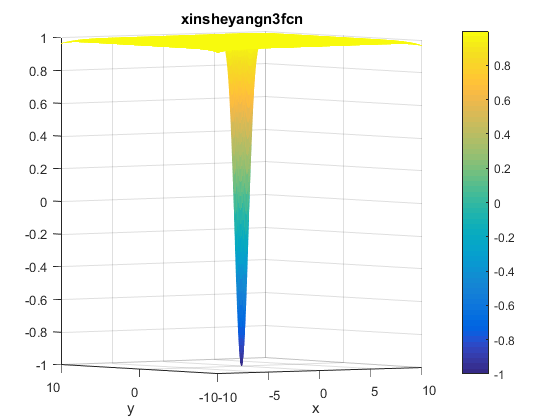
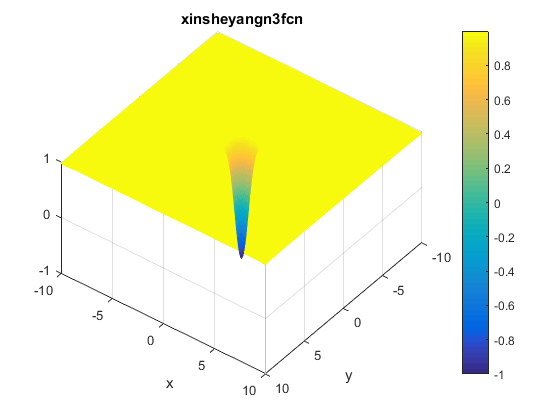
A contour of the function is presented below:
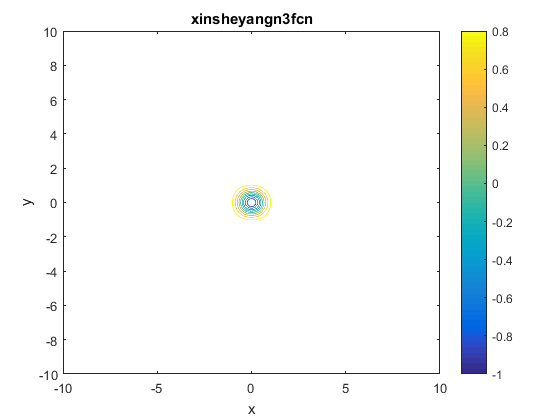
Description and Features
- The function is convex.
- The function is defined on n-dimensional space.
- The function is non-separable.
- The function is differentiable.
Input Domain
The function can be defined on any input domain but it is usually evaluated on $x_i \in [-2\pi, 2\pi]$ for $i=1, …, n$.
Global Minima
The global minimum $f(\textbf{x}^{\ast})=-1$ are located at $\mathbf{x^\ast}=(0, …, 0)$ for $m=5$ and $\beta = 15$.
Implementation
Python
For Python, the function is implemented in the benchmarkfcns package, which can be installed from command line with pip install benchmarkfcns.
from benchmarkfcns import xinsheyang3
print(xinsheyang3([[0, 0, 0],
[1, 1, 1]]))MATLAB
An implementation of the Xin-She Yang N. 3 Function with MATLAB is provided below.
% Computes the value of the Xin-She Yang N. 3 function.
% The Xin-She Yang N. 3 function is a parametric function and it is
% behaviour can be controlled with two additional parameters 'beta' and
% 'm'. In this implementation, the parameters are optional and when not
% given, their default value will be used.
% SCORES = XINSHEYANGN3FCN(X) computes the value of the Xin-She Yang N. 3
% function at point X. XINSHEYANGN3FCN accepts a matrix of size P-by-N and
% returns a vetor SCORES of size P-by-1 in which each row contains the
% function value for the corresponding row of X. In this case, the default
% values of 'm=5' and 'beta=15' is used for function parameters.
% SCORES = XINSHEYANGN3FCN(X, BETA) computes the function with the given
% value of BETA for its 'beta' parameter. In this case, the default value
% of 'm=5' will be used for the parameter.
% SCORES = XINSHEYANGN3FCN(X, BETA, M) computes the function with the given
% value of M for its 'm' parameter.
%
% Author: Mazhar Ansari Ardeh
% Please forward any comments or bug reports to mazhar.ansari.ardeh at
% Google's e-mail service or feel free to kindly modify the repository.
function scores = xinsheyangn3fcn(x, beta, m)
if nargin < 2
beta = 15;
end
if nargin < 3
m = 5;
end
scores = exp(-sum((x / beta).^(2*m), 2)) - (2 * exp(-sum(x .^ 2, 2)) .* prod(cos(x) .^ 2, 2));
end The function can be represented in Latex as follows:
f(\mathbf x)=f(x_1, ..., x_n) =exp(-\sum_{i=1}^{n}(x_i / \beta)^{2m}) - 2exp(-\sum_{i=1}^{n}x_i^2) \prod_{i=1}^{n}cos^ 2(x_i) References:
- Momin Jamil and Xin-She Yang, A literature survey of benchmark functions for global optimization problems, Int. Journal of Mathematical Modelling and Numerical Optimisation}, Vol. 4, No. 2, pp. 150–194 (2013), arXiv:1308.4008
- X. S. Yang, “Test Problems in Optimization,” Engineering Optimization: An Introduction with Metaheuristic Applications John Wliey & Sons, 2010. [Available Online]: http://arxiv.org/abs/1008.0549